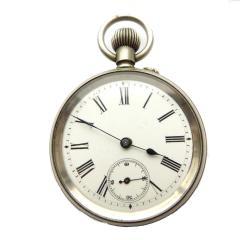-
Recently Browsing
- No registered users viewing this page.
-
Topics
-
Posts
-
@JohnR725 that's very helpful. I appreciate the time you took to give those instructions and post the pictures. below is a picture of my staff, which looks identical to the ones you posted. The approx measurements I got are: .772 on the left part of the staff; .715 on the right side of the hub; the hub is 1.107; and the overall length (minus the broken pivot) is 5.248; which seem to line up with the measurements you posted. I didn't think to measure the pivot, which I'll do if there's enough of one left on the staff. Thanks again.
-
Thank you to both of you! I've been somewhat derailed by this quandary for a couple of days now. I am guessing that the point of the wider tweezers is to support the whole spring at the same time in an effort to prevent it going under tension... I have already discovered the Zen of a clutter free space, and trying to keep my work well away from the edge, however the most terrifying of the flights wasn't so short, I had my work in the middle of the table and nothing else around. That particular launch was towards me. I distinctly recall feeling the spring hit my left hand as it escaped. I only found it by dumb luck, on the floor, between the legs of my chair. I need to order a pack of replacements just in case. I think I recall a thread discussing where to find them, and the differences between the clones and the authentic ETA ones, pointing out that they're not interchangeable (the clones being longer IIRC). Now I just have to find that thread again. What I haven't mastered is the zen of the search function here. I'm sure I"ll get that down eventually. So this is similar to, but different from one of the posts I had found in my original searches (or maybe I'm just hallucinating, I can't find the post I thought I remember). The bits about the corner filled in a gap in what I'd read before. At least I have a more clear picture in my head about what needs to happen now. Yes, I've learned about how touchy these springs are. What I'm not sure I have a good grasp on is the understanding of what causes the spring to flex, other than to say "the slightest little touch" I think I'm going to try a small bit of Rodico to position the spring next time.
-
Hi all, needing a little help. I have an old Casio AQ-321G, but have no idea what battery it takes. I've looked around online, but cannot see anything... I see a 309 stamped on the case back, could this be it....? Can you please help, below are some pictures:
-
By nevenbekriev · Posted
The radial teeth are for hte seconds register, and the other (which is simple and doesn' take away significant torque from the train) for the minutes register.
-







Recommended Posts